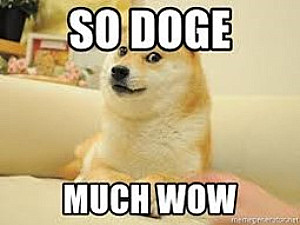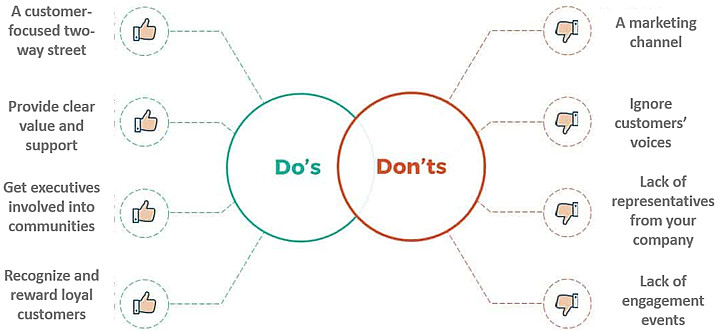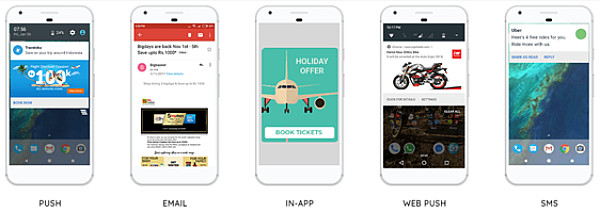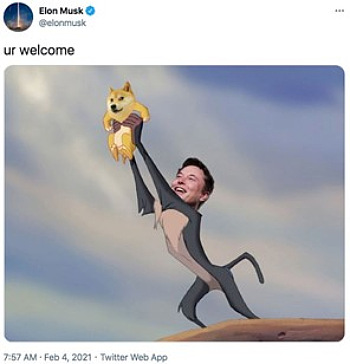I used to be a fan of Doge when it was still a good Internet meme. Wow.

Dogecoin, the dog-themed satirical cryptocurrency that had soared nearly 16,000% year-to-date (YTD) at one point in 2021 (in mid-July, it stands at more than 4,000% growth YTD), holds some interesting lessons on trending marketing tactics and channels.
Dogecoin was created as a joke on Dec. 6, 2013, after two hours of development by an engineer and an entrepreneur. It could be easily mined, and it cost mere fractions of a cent to buy at the time.
So how can we explain the recent Dogecoin frenzy? From the perspective of marketing, what turned a joke into the fifth-largest cryptocurrency by market cap?
1. Memes and Entropy in Your Content Strategy
Are you struggling to improve engagement or grow follower numbers on social media? You may consider using memes in your content strategy.
Over 1 million users share memes every day, according to 2020 Instagram data.
"Meme" originally referred to imitation of a survival-enhancing gene as a biological phenomenon. Its current marketing-related definition is "remixed and iterated messages which are rapidly spread by members of participatory digital culture."
Studies have examined how typical memes succeed in competing for limited user attention. However, whether using game theory or the epidemiological SIR model, no one has a proven formula of memes in marketing. But here are some common features of the popular Doge memes: They are sarcastic, relatable, and humorous; they aim for quick laugh; and they are easy to understand.

I will try to explain a bit further using information theory. You may have heard of "entropy" in physics, but it can also be used to describe the disorder or uncertainty of information. The concept of information entropy was introduced by Claude Shannon in his 1948 paper: The more uncertain some information is, the more computing storage is required for it.
Later, the concept of entropy came to be used widely in political and social sciences to analyze information distribution: The more variations and uncertainty a topic creates, the more discussions it will generate in a fixed audience group. Almost all successful memes allow maximum user-generated content or variations in different scenarios.
Let's use Doge as an example. Which Doge meme templates have you seen more often?

Probably B or D. That's partially because we pretty much know what those two images convey, but we don't really know what variations will happen in A and C (a Doge bread and angry Doge). But there are more variations allowed in B and D with more places to add text; your audience's creativity could therefore generate a great amount of entropy.
If you are ready to try memes marketing, you should capture the common features in the above image but also add entropy. Once you allow considerable modification and mediation, your audience can create, change, and recreate new messages for you, building the momentum to spread widely.
2. Solidarity Through Community
Human beings are social animals: According to the Maslow's Hierarchy of Needs, the sense of belonging is the third most important human need.
Although the world seems to be slowly recovering from the pandemic, people around the world are still experiencing boredom and loneliness because of lockdowns and other restrictions. Therefore, we've experienced a rise of virtual social communities that are not restricted by physical boundaries.
In addition to interaction and companionship, every online community offers the ability to help each other for more social capital.
For example, in July 2020, James Galante started a #DogecoinTikTokChallange campaign, telling his global audience in a video, "Invest just $25. Once the stock hits one dollar you'll have 10-grand." TikTok's algorithm is good at promoting content to a wider audience with similar interests. His video racked up millions of views, and Dogecoin surged 61% within 24 hours.
Earlier in 2021, over 25 thousand enthusiastic fans from r/SatoshiStreetBets worked together to push the coin's value to 69 cents to celebrate the Doge Day. Similar shenanigans of the cryptocurrency speculators worked again and again, driven by viral Dogecoin communities.
If you plan to start your brand's online community, one of the biggest lessons from Dogecoin is to bring clear value to your customers. Your members should feel that the community is made for them, not for the company. It is a channel where your customers should drive the agenda, network with each other, exchange ideas, and gets support.
Here are do's and don'ts to keep your community thriving:

3. A Post-Pandemic Omnichannel Strategy
Some people may think omnichannel is just another marketing buzzword, or that it's just "multichannel." Dogecoin makes a great case for a post-COVID omnichannel strategy for reaping massive benefits.

The goal is to form seamless customer experience—offering the buyers what they need, when they want it, anywhere and from any device. Dogecoin did so by allowing buyers to access via mobile apps and desktop, sending updates through newsletters, social media, SMS, and traditional media. And as the pandemic made offline events all but impossible, Dogecoin sent shockwaves throughout the crypto world with its #DogeDay virtual events on April 20, 2021.
AI-powered chatbots and social sharing keep its audience engaged from a computer or phone. Companies helped Dogecoin become more connected with the "physical world": Snickers released packaging images with Dogecoin motifs; the Dallas Mavericks announced to support Doge payments by partnering with BitPay; and Milky Way tweeted news about Dogecoin and tagged it "To the Milky Way."
To prepare for the post-COVID world, here are some omnichannel recommendations for marketers:
- Continually seek ways to add value to the customers through interactions between and among different channels.
- With so many customers moving online, come up with virtual stores and events to provide customers.
- To win the competition for attention, focus on a specific purpose of each touchpoint.
4. That Influencer Works for You
Influencer marketing is one of the fastest-growing online customer acquisition channels, propelled in part by the rise of new social media platforms, such as TikTok and Clubhouse. According to the 2021 State of Influencer Marketing Benchmark Report, the influencer market will grow by $13.8 billion in the next year.
The value of influencer marketing is in building brand trust and social proof. The cult-like following of Dogecoin was taken to new heights by Elon Musk's memes.

Though it is tempting to get celebrities to deliver brand awareness, is that useful for your brand?
To answer that question, you will need clear KPIs.
On average, for every $1 that brands spend on influencers, they are getting an ROI of $5.78, it's been reported. However, brand equity is not hard metrics, such as conversions and sales revenue. Besides, changing social media algorithms on Facebook or TikTok make organic influencer content less visible and harder to track. All those challenges make it unlikely that borrowing someone else's playbook would guarantee success.
However, the good news is that as influencer marketing matures, more brands are starting to integrate the channel strategically and map out the full customer journey with clear goals for influencers at each step. Whether they are celebrities, top-tier influencers, or micro-influencers, you can attribute their impacts on lower funnel metrics like clicks, conversions, and product sales.
* * *
Dogecoin can help us see how marketing strategies are evolving to get smarter—and wilder.
So will your manager greenlight spending budget on innovative marketing if you can't prove it works? I don't think so.
To spend your marketing budget wisely is to be accountable on ROMI (return on marketing investment). Identify what matters to you. From there, determine which the above-listed approaches inspired from Dogecoin will get you across the finish line.
You just might be able to replicate the Dogecoin rally for your company, too. Wow.




